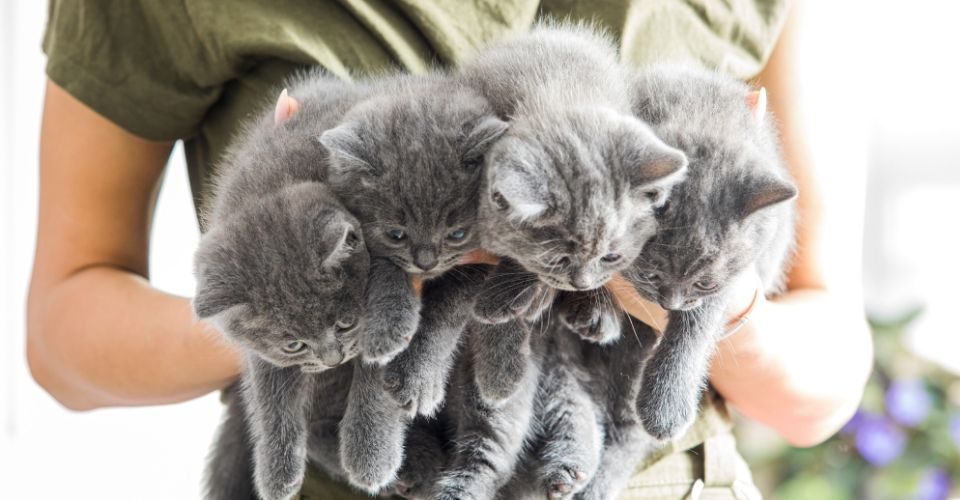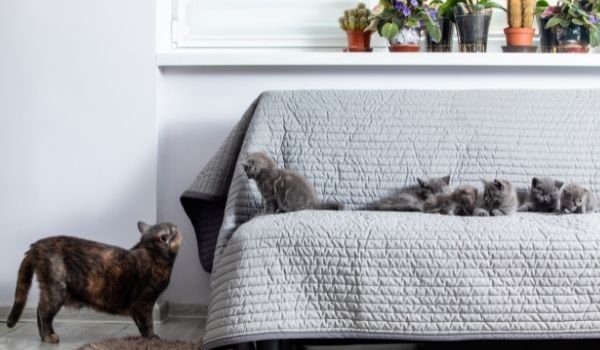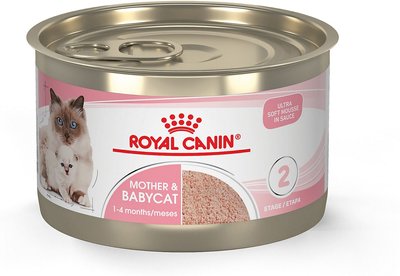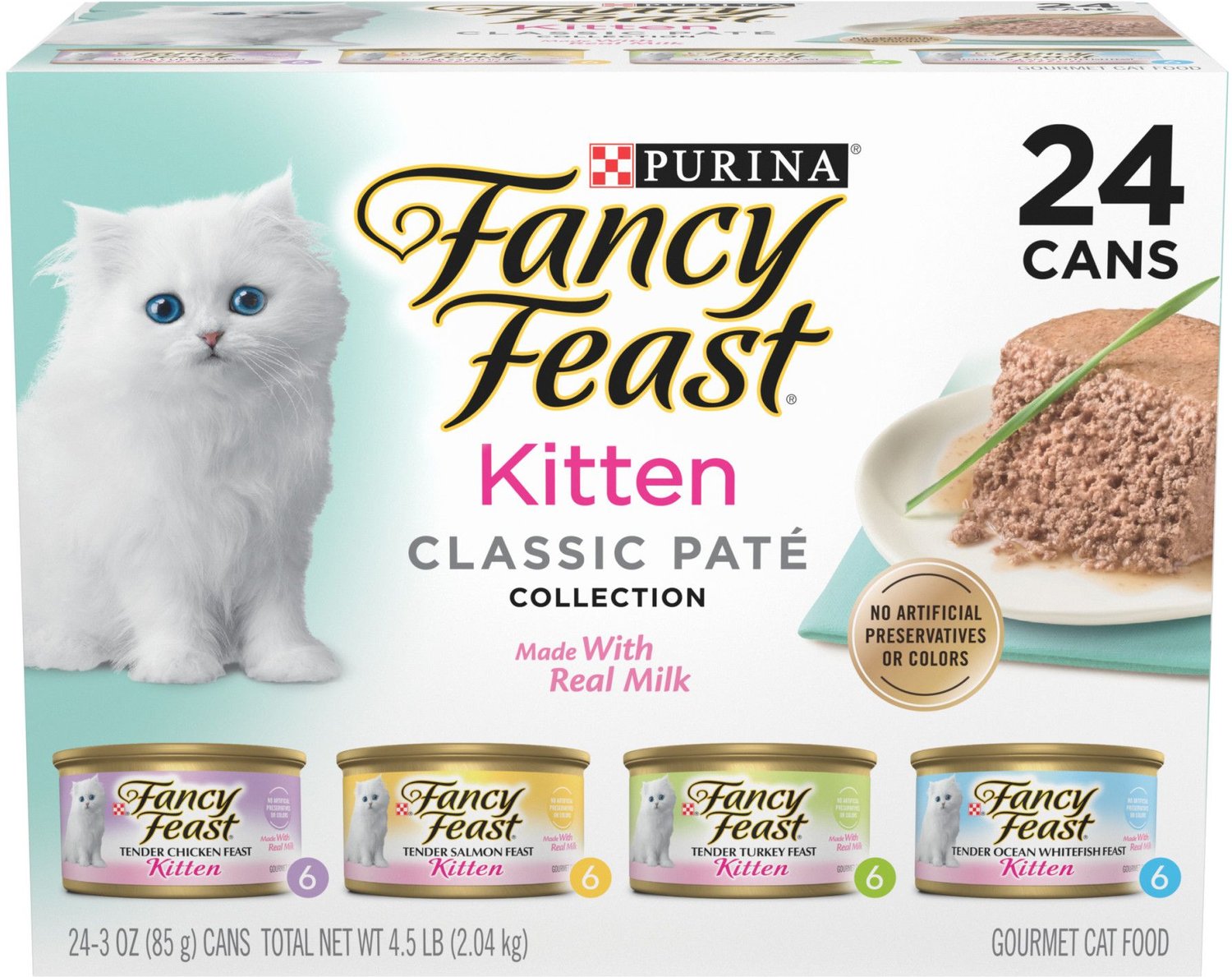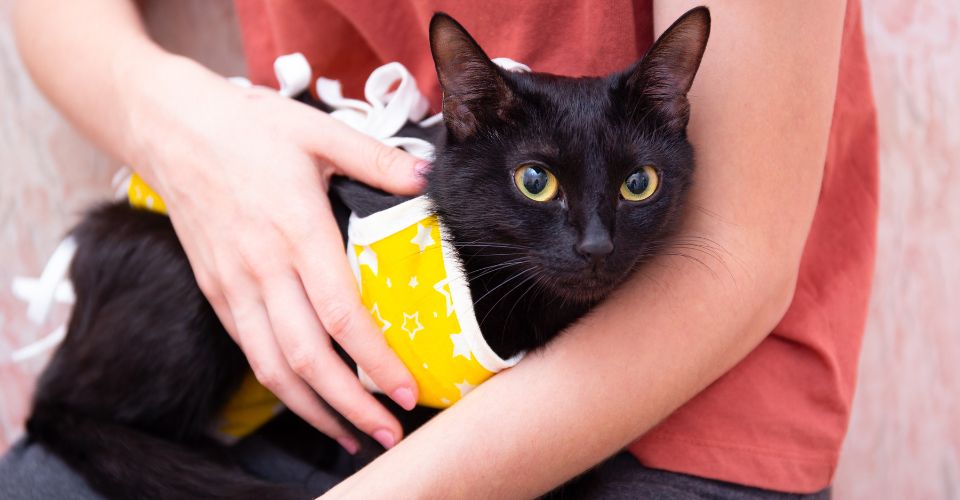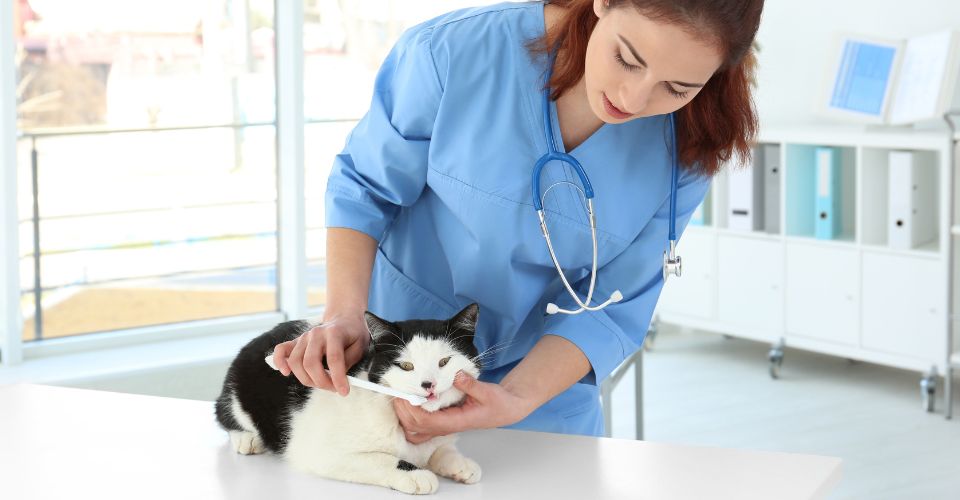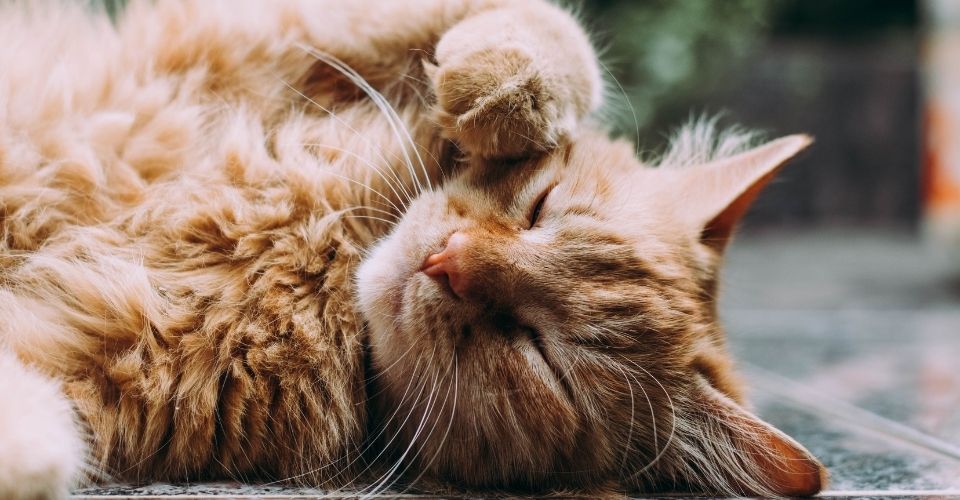We all love kittens. A newborn kitten is cute, and multiple kittens in the litter are the cutest. But caring for a litter of kittens could be an arduous task. Therefore, as soon as the cat parents learn that their feline friend is expecting, they start asking questions, such as how many kittens can a cat have in a litter?
Well, before you start worrying about the number of kittens in the litter, you should first confirm if your cat is really pregnant or just fat. While there are some signs of cat pregnancy that will give you an idea if your cat is expecting, to confirm pregnancy, you will have to take your cat to a vet.
Kittens In a Litter
Knowing the numbers of kittens in the litter would not only satisfy the curiosity of cat owners but would also help them to make necessary preparations for the kittens developing inside the queen.
Continue reading to learn how many kittens you should be expecting. Besides that, we will also be discussing the factors affecting the number of kittens in a litter and how can you confirm the number of kittens in a litter.
So without further ado, let’s get to it.
How Many Kittens Can a Cat Have?
On average, cats have four kittens per litter, but the number can vary between one to 12 kittens in a litter, says Dr. Hassan, DVM. Where first-time moms tend to have smaller litters of about 2 to 3 kittens, pedigree cats like Burmese, Siamese, Chausie, etc., tend to have larger litters. Similarly, larger cats like Maine Coon also have larger litters than small cat breeds. But even if the cat is pedigree, large, and the pregnancy goes perfectly, most cats will never have more than 12 kittens in a litter.
World’s Largest Litter of Domestic Cats
A Burmese/Siamese cat set the record for the world’s largest litter of domestic cats by giving birth to 19 kittens on 7 August 1970. While four of these kittens were stillborn, the rest of the 15 were healthy. Except for one of the 15 kittens that survived, all others were strangely males. 19 kittens in a litter are extraordinary, but it is not very common for cats to have litters larger than 12 kittens. It is the reason that the record of 19 kittens set in 1970 has never been broken. No cat even came close to breaking it.
That said, two cats are said to have a litter of 15 kittens in 1976. Where one litter was birthed in Havelock, Ontario, Canada, the other was in New York, with four stillborn kittens.
Factors Influencing the Size of Cat Litter
How many kittens can a cat have is dependent on many factors like genetics, environment, the overall health of the cat, etc.
Below we have discussed several factors that are believed to affect the size of the litter.
Genetics and Breed of the Queen
Genetics and breed of the cat play a deterministic role in determining the number of kittens in a litter. While there is no scientific study to substantiate this claim, it is found that cats tend to have litter sizes similar to their mothers, provided that there is no significant change in other factors. Certain cat breeds like Siamese, Burmese, Maine Coons, and Ragdolls seem to have larger litters; some cat breeds like Persians, on the other hand, tend to have fewer kittens per litter.
Many argue that it is not the genetics of the cat but the size that determines the size of the litter.
Size of the Cat
Bigger cats tend to have larger litters; smaller cat breeds have fewer kittens per litter. The same is true in the canine world—bigger dogs tend to have larger litters. Large cat breeds like Maine Coon, Norwegian Forest Cat, Ragdoll, and Ragamuffins are known for having larger litters—they are recorded to have 4.3 kittens per litter, on average. On the other hand, small cats tend to have a smaller litter. Exotic Shorthair and Longhair cats have 2.7 kittens per litter on average.
Age of the Cat
Age can also affect the number of kittens in the litter. The prime age for reproduction in cats is adulthood—they produce more kittens per litter during the middle age. Younger kittens and old kittens tend to have smaller litters. However, if the middle-aged cat is not in the best health, she may give birth to fewer kittens.
Overall Health of the Queen
The overall health of the queen is imperative for a healthy pregnancy. It would not only determine how many kittens the cat would develop in the first place but also how many kittens will be carried to term. If a cat’s body is unable to support all of its kittens, chances are the development of one or more kittens would stop. The cat’s body absorbs such fetuses while other fetuses continue developing normally.
Even in the later stages of cat pregnancy, there is a possibility of miscarriage and stillborn kittens. The probability of miscarriage and stillborn kittens is increased when the cat is infected with feline distemper, feline panleukopenia virus, feline infectious peritonitis, etc.
Nutrition of the Cat
Regardless of the genetics, breed, and size of the cat, one just cannot expect a malnourished queen to have a healthy pregnancy and give birth to a huge litter. Like sick cats, malnourished cats are just not able to support all of the fetuses developing inside them, resulting in fewer kittens per litter.
Nutrition is extremely important for a healthy pregnancy. 9 weeks of pregnancy, labor, and the arduous task of birthing and nursing kittens demands a lot of energy. Therefore, it is strongly advised that you switch to kitten food as soon as your cat starts exhibiting the signs of cat pregnancy.
Determining the Litter Size of Your Pregnant Cat
Changes in cat behavior like increased appetite, nesting, and pinking of cat nipples will give you a fair idea that your cat is pregnant but determining how many kittens are in there is a bit difficult. While you can feel your pregnant cat’s belly to determine the number of kittens growing inside, it is strongly advised not to do that as you might end up hurting one of the kittens inside. So, if you cannot wait until birth, you should take your cat to a vet to confirm the litter size.
The vet might perform an ultrasound after 16 days of pregnancy, which would confirm pregnancy but telling the number of kittens by calculating the heartbeats is not always accurate.
An X-ray would confirm pregnancy and the number of kittens growing inside your cat, but given the side effects, it is advised not to do an X-ray until the cat is 55 days pregnant.
How To Tell If Cat Still has Kittens Inside?
Labor in cats is a long and exhausting process. There are three stages of cat labor, with the first stage lasting up to 36 hours. Due to exhaustion, cats often go into a resting stage, also known as interrupted labor. During this resting stage, the cat rests and rejuvenates herself for the laborious task of delivering the remaining kittens. This stage may last up to 24 hours, and sometimes cats may rest for up to 36 hours. When your cat is done resting, straining will recommence, and the remaining kittens will be birthed normally.
But what if the cat is not going into labor? How to tell if the cat still has kittens inside? Well, there is a chance that your cat has already delivered all the kittens, but if the number of kittens delivered is less than the kittens confirmed by the X-ray and there are still some kittens inside your cat, she will be exhibiting the following signs.
- Cat continues to pant. While heavy breathing is normal during labor. If your cat continues panting even after birthing a few kittens, there is a huge chance a kitten is still in there.
- The cat is still straining. Cats experience visible straining during the second and third stages of labor; this means that there is still a kitten inside your cat. So, if you see your cat straining for more than 25 to 30 minutes and no kitten is being delivered, you should contact your vet.
- The cat is in pain and making a lot of noise. Like in humans, labor in cats is quite painful. So, if your cat seems to be in pain after birthing a few kittens, there is a huge chance cat still has kittens inside of her.
- The cat is excessively licking her genital area. If a placenta containing a kitten inside is stuck in the vaginal canal, a cat may start licking it excessively to dissolve the membranes of the placenta surrounding the kitten.
- The number of placentas passed is less than kittens. After the passage of each kitten, afterbirth (placenta) is passed. Sometimes cats may pass more than one kitten before any of their placentae is passed.
- Cat is not fully focused on her kittens. After having passed all of the kittens, the cat will be fully focused on caring for the kittens, but if she seems to be not fully focused, probably there is still a kitten inside your cat that she is trying to push out.
At What Age Can a Cat Get Pregnant?
The development of kittens does not stop after their landing into this world; in the first couple of months, kittens go through an overwhelming number of changes, making it difficult for cat owners to keep track but a kitten growth chart always proves handy. Kittens develop so fast that most of them hit puberty by the age of four months.
Yes, you read that right. A 4-month-old kitten can get pregnant and have kittens by the age of 6 months. If you do not want your kitten to be having kittens, you should get her spayed before she reaches puberty. Many owners that delay spaying later have to make the difficult decision of spaying their pregnant cat.

